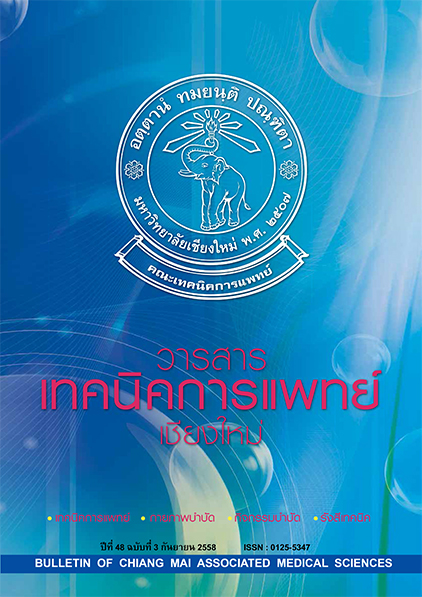Effect of rehabilitation education to village volunteers toward activities of daily living performance of people with disabilities resulting from stroke
Main Article Content
Abstract
Background: Numbers of people with disabilities resulting from stroke are increasing in Thailand. Major sequela of disease is weakness in one side of the body causing difficulty in activities of daily living (ADL) especially when they are at home. Empowerment locality dwellers to participate in health care would be of great benefit to community rehabilitation.
Objective: Purpose of the present study was to investigate rehabilitation education provided for village volunteers toward activities of daily living (ADL) performance of stroke participants.
Materials and methods: Subjects were recruited by purposive sampling including 32 village volunteers, 32 caregivers and 32 stroke survivors. The instrument used was the Test of Activities of Daily Living (ADL). Statistics used were descriptive and Paired t-test. Researchers conducted a 3-hour rehabilitation education program for village volunteers. After educating, village volunteers made a 1-hour home visit to stroke survivors’ houses and employed the rehabilitation program for people with disabilities as learned with suggested health-care assisted techniques to relatives once a week, for a period of 8 weeks. The researcher collected scores of ADL performance in stroke participants before and after the 8-week home visit program.
Results: Normality test of ADL scores revealed 5 outliers excluded from the group. There were 27 stroke survivors, 27 caregivers and 27 village volunteers remaining for data analysis. Results demonstrated that average ADL performance score was 85.59+13.02 at pretest and 89.63+8.95 at posttest. Test score difference demonstrating the higher value of posttest compared to pretest (p<0.05) indicated higher ADL performance in these participants after intervention.
Conclusion: The increase in ADL scores may be explained that at pretest, the majority of stroke survivors and caregivers lacked knowledge regarding rehabilitation at home. Therefore, after receiving knowledge and methods of ADL techniques, together with suggestions for simple home modification from village volunteers, participants gained the higher scores after home visit intervention. Occupational and physical therapists can apply this program to use in everywhere to enhance independent living of the disables and promote community participation among village volunteers, people with disabilities and caregivers. These can reduce burden at hospitals and decrease expense of rehabilitation process.
Bull Chiang Mai Assoc Med Sci 2015; 48(3): 241-250. Doi: 10.14456/jams.2015.15
Article Details
Personal views expressed by the contributors in their articles are not necessarily those of the Journal of Associated Medical Sciences, Faculty of Associated Medical Sciences, Chiang Mai University.


